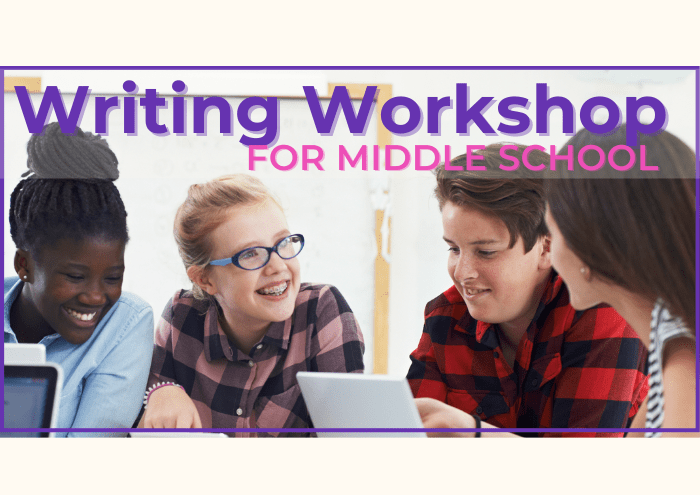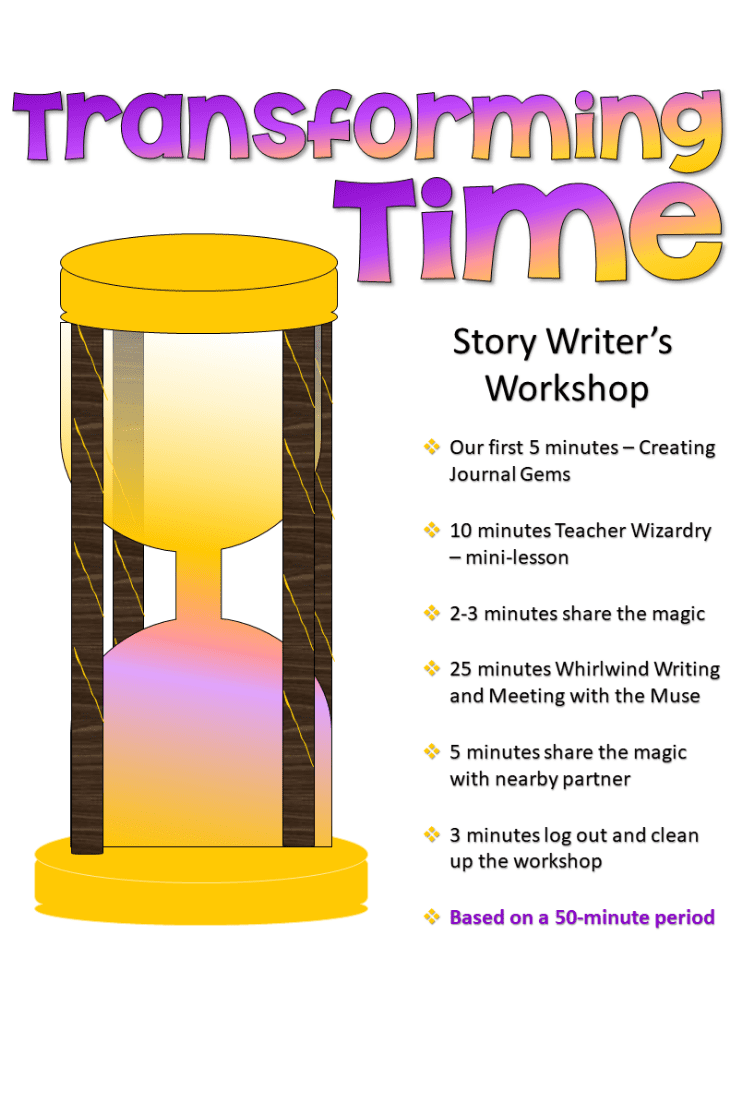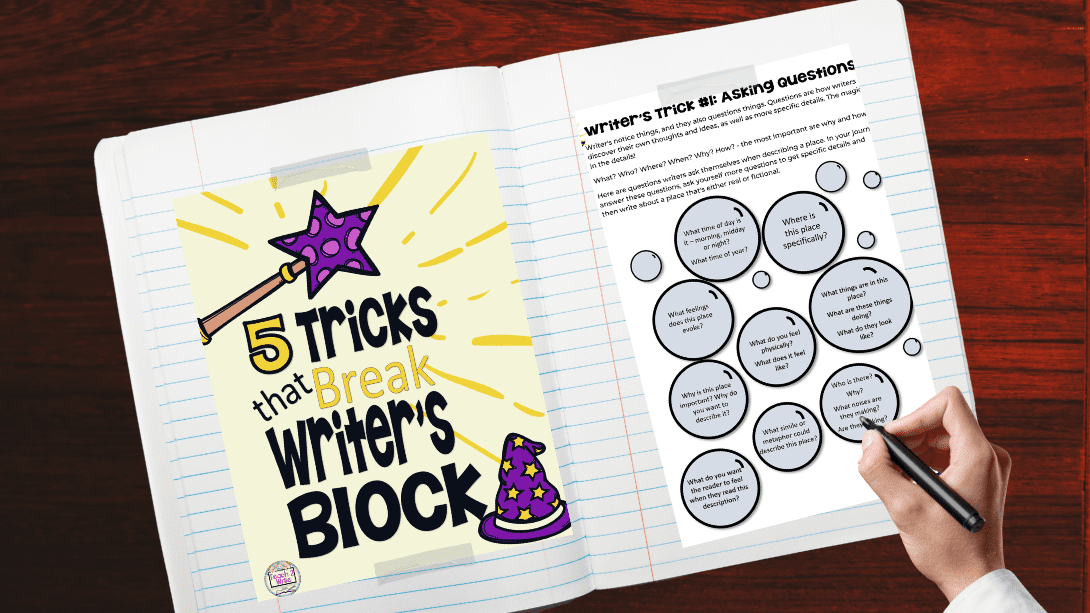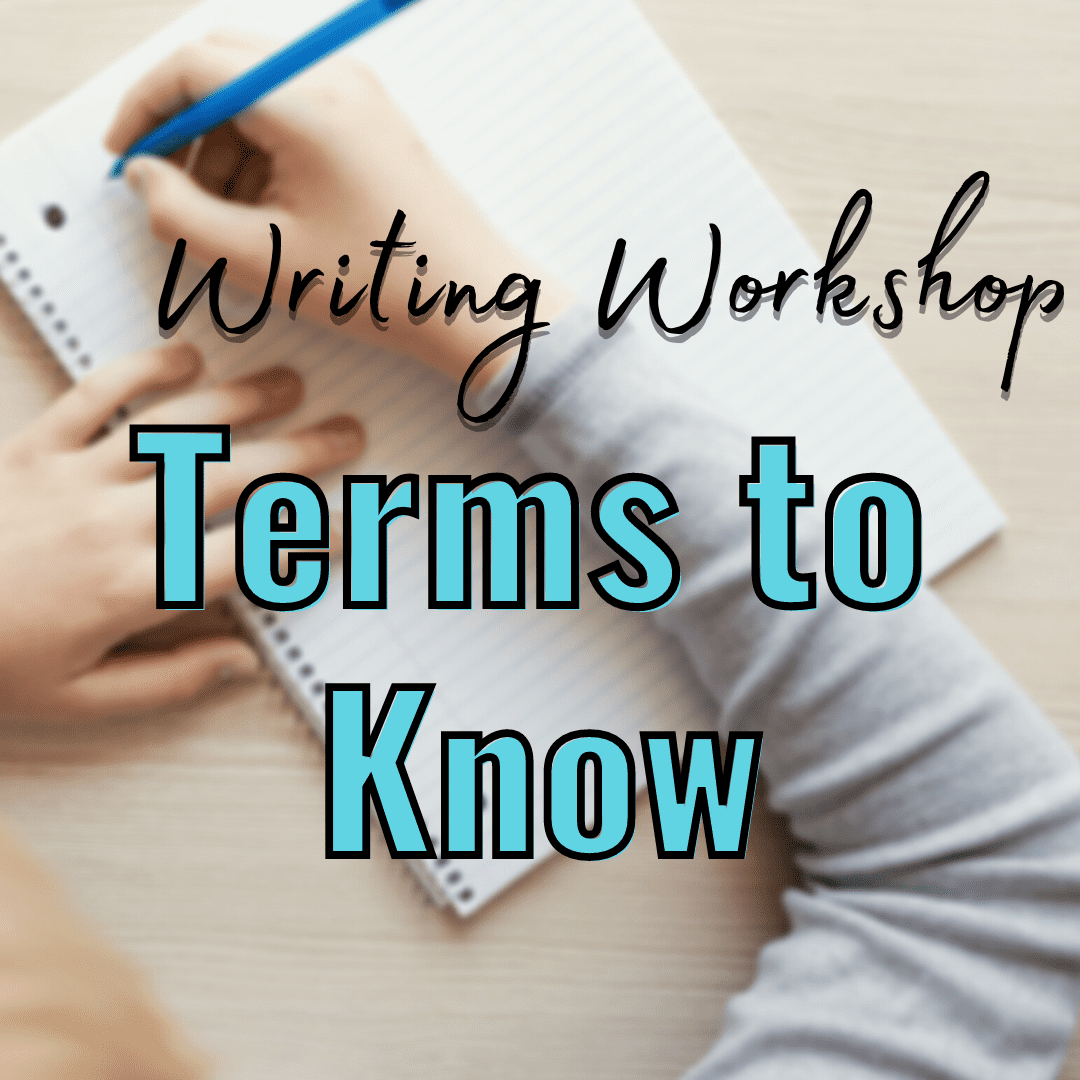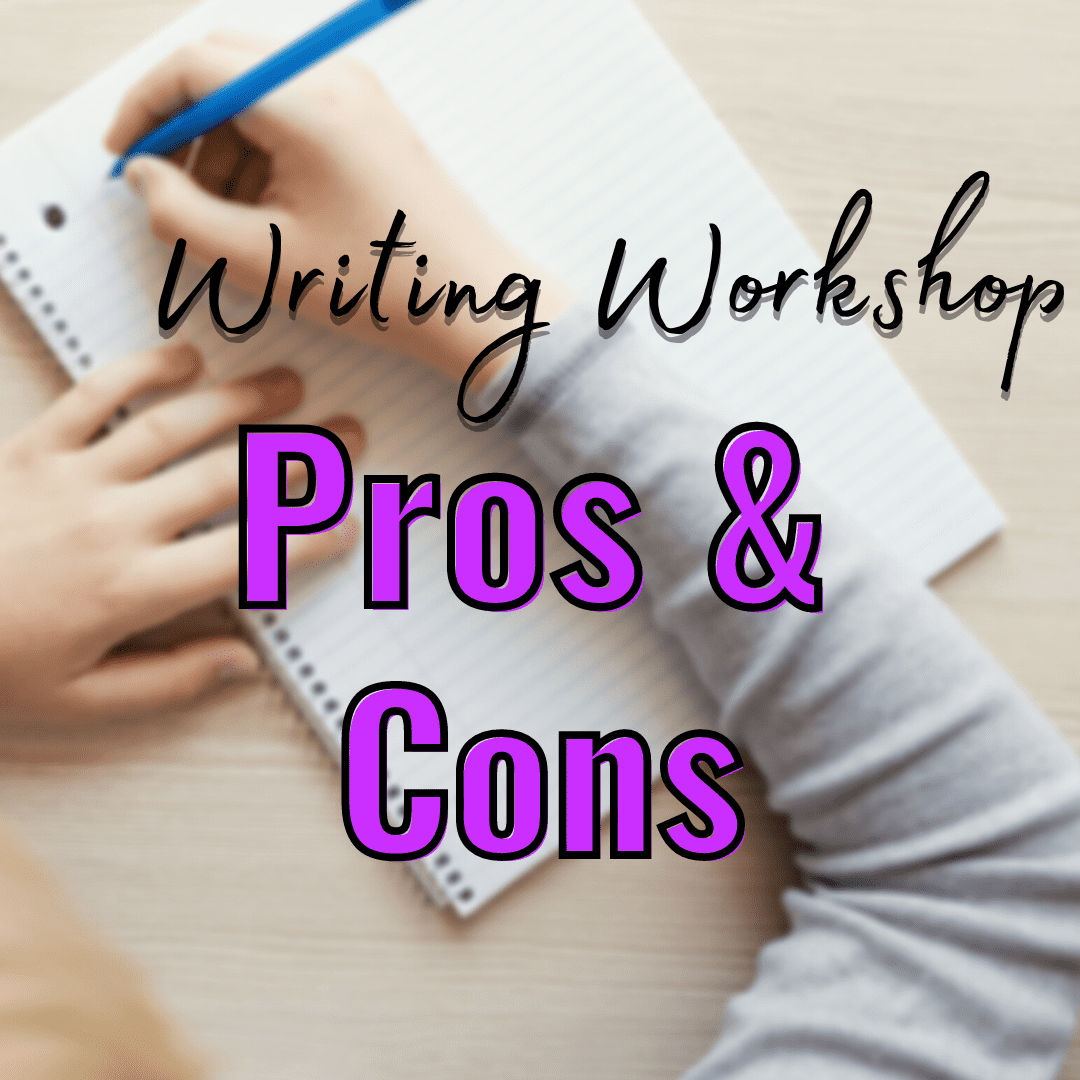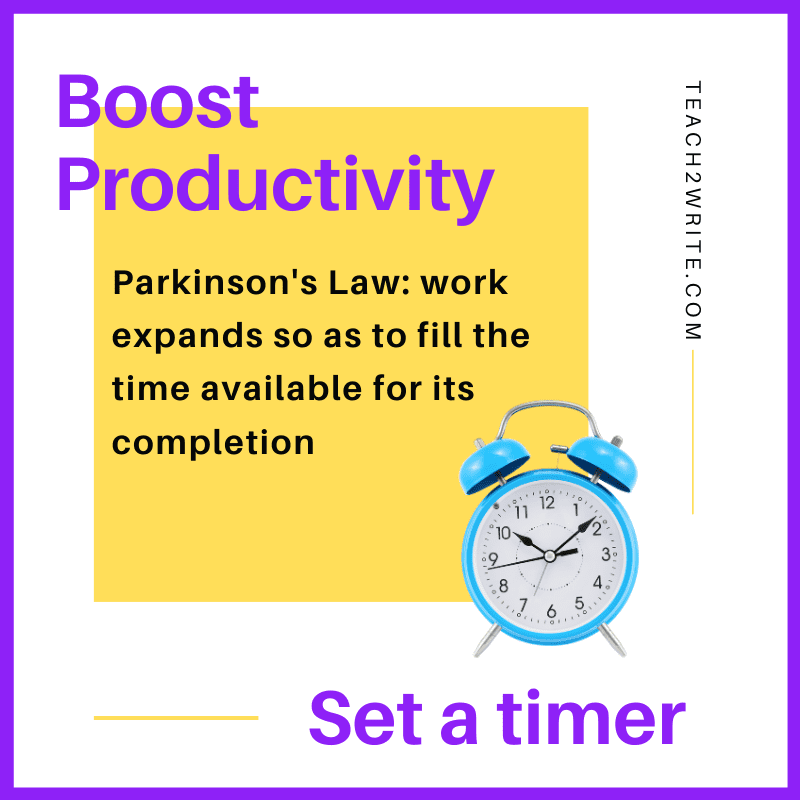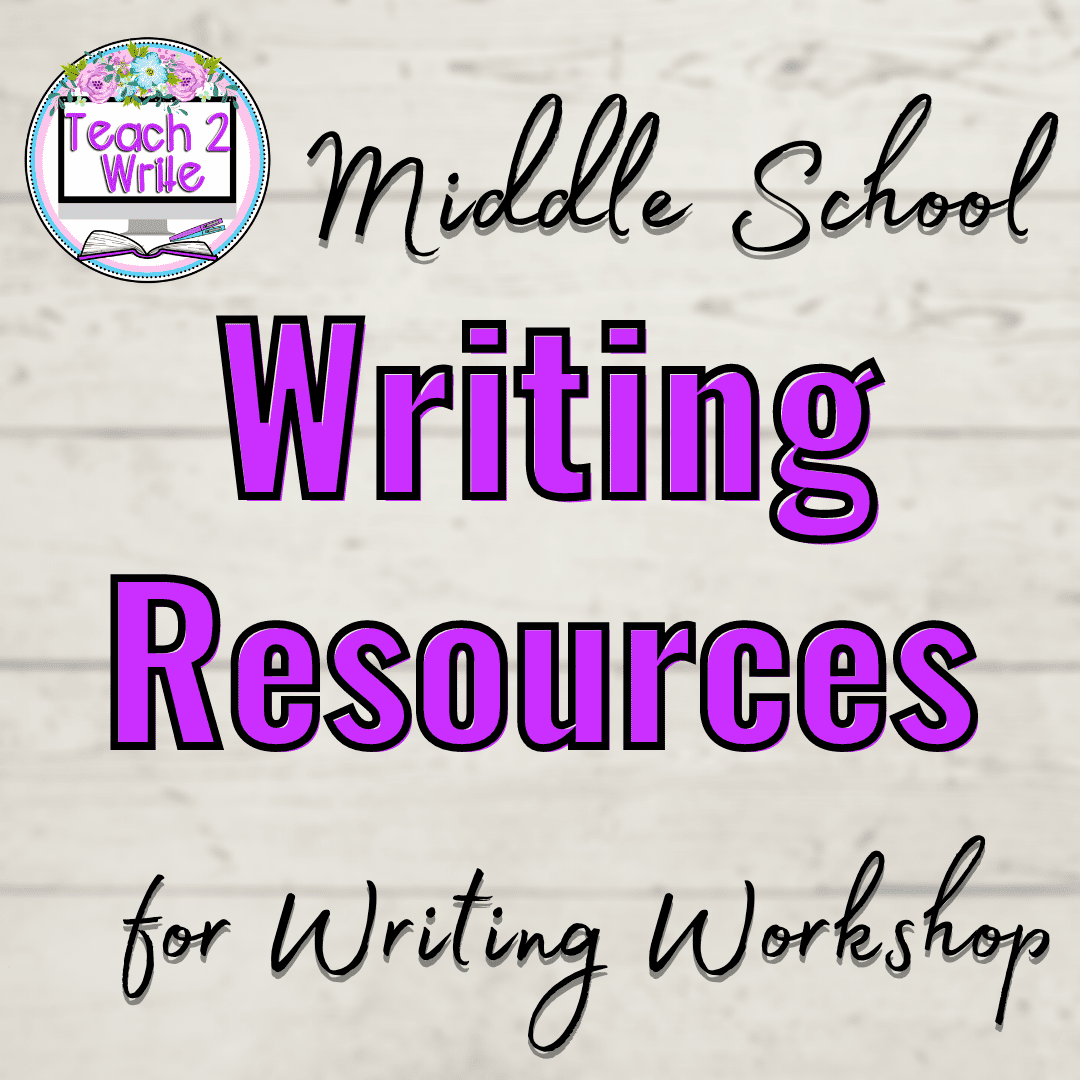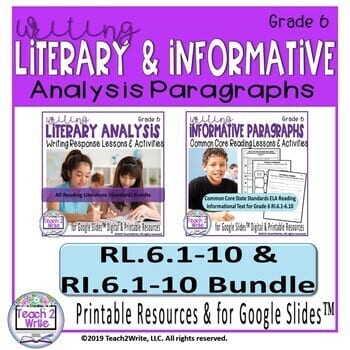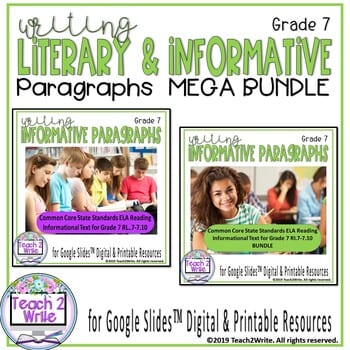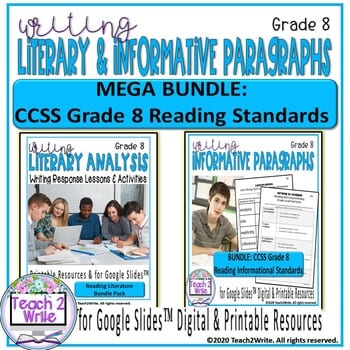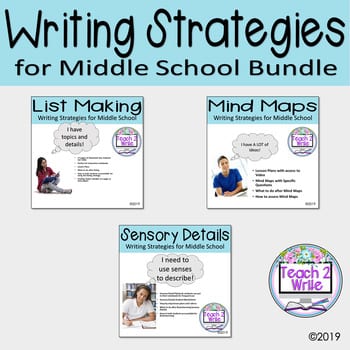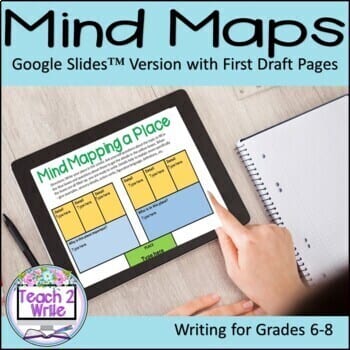Writer’s Workshop Middle School: The Ultimate Guide
Writer’s Workshop Middle School: The Ultimate Guide defines the writer’s workshop model, its essential components, pros and cons, step-by-step set-up, and further resources.
Using a writer’s workshop model helps my students improve their literacy skills and saves me lots of time planning and grading. So, now I have more time and energy for my family and for helping other teachers through Teach2Write.
What is the writer’s workshop model?
Writer’s workshop is a method of teaching writing developed by Donald Graves and Donald Murray, amongst other teacher-researchers.
The writer’s workshop provides a student-centered environment where students are given time, choice, and voice in their learning. The teacher nurtures the class by creating and mentoring a community of writers.
So, why does the writer’s workshop in middle school matter?
Students learn more during the writer’s workshop because you can mentor them toward what they need to know and practice, and they have lots of time to write and read in order to improve at their own pace (to an extent).
For example, if the skill I need to teach is how authors use mood and tone to create meaning, then I would use a mentor text to teach that concept. However, after reading, the focus will not be on answering questions about the text in written form. Instead, I demonstrate how writers choose particular words and the arrangement of those words to create a mood and tone.
Students then try creating mood and tone with their own pieces of writing. Only after students have practiced their own creations, do I then circle back around to other literature for students to practice literary analysis of mood and tone and its effect on meaning.
Why I focus on writing in the ELA classroom?
I’ve found students are more likely to read assigned texts if I’ve given them a reason to use those texts. That reason? To apply what they learn from mentor texts to their choice writing. Middle school students love to express themselves in creative ways, and by giving students this choice, you build engagement and motivation to continue learning.
The focus becomes reading to write more clearly and expressively. All texts become mentor texts that students study with a writer’s eye. How did the writer hook the reader into the story? What techniques did the writer use for dialogue? How many different ways does my favorite author introduce characters? Why did the character do that? What motivated him/her? How do I write character motive into my stories? What kind of mood and tone do I want to create for my reader?
The essential components of the writer’s workshop in middle school are:
- Time to write daily
- Student choice
- Exploring the writer’s voice
- Building a community of writers
- Mentor teaching
1. Time to Write Daily
Students need a chance to write daily. Various ways you can do this are through Bell Ringers at the beginning of the class, writing during the mini-lesson, and writing projects during workshop time. My students use writing journals because they need a space to think before they face a blank computer screen.
Students do read in my classes. However, their purpose for reading is to become better writers. This reading is either assigned, student choice, or a choice between the assigned reading and student choice, depending on the skill or concept I’m targeting that week.
This is how I break up our daily writing:
- Write Now (bell ringer)
- Mini-lesson and sharing
- Writing/Reading Workshop while I confer with writers
- Short turn and talk, log off computers and pack up
Below is an example of my story writer’s workshop time transformation. This is what I use when we are writing narratives. I’m using a fantasy magic theme here:
2. Student Choice
To keep students motivated to write, you want to build in student choice whenever and wherever possible. Just to clarify, you don’t have to give them choices for everything they do.
For one thing, that would be as overwhelming as shopping on the cereal aisle at your local grocery store. Just too many choices.
When I introduce a concept, I may give them a few choices on how students can practice that concept. If I give them a writing assignment, I often allow them ONE choice in topic, genre, audience, or mode of writing.
If you need students to complete an assignment/activity within a certain time period, tell them ahead of time. Let them know they can turn in an excerpt if they want to write something longer than you expect.
Of course, this is not always possible. They need to learn how to write within certain time parameters. So, let them practice this through timed writings or word sprints.
One way to help students with choice is to have them do listing activities frequently. They could even have a section in their writing notebooks just for lists of ideas.
Another way to help students with choice writing is to teach them the 5 tricks that break writer’s block.
3. Exploring the writer’s voice
Writer’s voice – that elusive term that most writers have no idea how to achieve until they’ve written for a while, and then finally realize they have it. The ultimate goal for me as a writing teacher is to help my students to find their voice.
I want students to be able to explore what is important to them personally and to explore how they can share this with others. From encouraging students to participate in small group sharing to author’s celebrations, students need the opportunity to see their writing voice matters.
There are so many different ways for kids to publish safely online – Edublogs, Adobe Spark, Google Sites, FlipGrid, etc.
The writer’s workshop allows students to bring pieces of writing through the writing process to share with others their unique, multimedia creations. Not ALL writing goes through this process, only those pieces that demonstrate their learning.
4. Building a community of writers in your writer’s workshop for middle school
Middle school students are very social, but even the quiet writers need to socialize often with other writers. This component of the writer’s workshop for middle school is what makes this model an actual workshop.
Students share their writing with each other. Usually, I allow for natural partnerships and groups to form. However, at the beginning of the year, I often pair up students for short activities. This helps everyone feel more comfortable with each other.
Name Game
One way I build a community of writers is to play the name game at the beginning of the year. We all stand in a circle and we toss a ball to each other and say our name and all the people who have had the ball tossed to them. It gets fun when students start to forget names. They all start out being self-conscious but end up laughing and smiling.
Share Time
Another way to build a community is during share time. I have students write in their notebooks as soon as they come into the classroom as a warm-up, starter activity that I call Write Nows. These Write Nows are projected up on the screen, and students write for 2-5 minutes. After this, I ask students to turn and talk to a neighbor about what they wrote.
Sometimes this writing is a review of the previous day or another activity that goes along with the skill we are learning. Other times it is a prewriting activity that helps break writer’s block.
Write a Letter to your Students
To help students get to know me as a community member, I write a letter to them and they write back to me. This starts the relationship-building between my students and me within the first week, and I conference with the students about their letters. This also gets them into the swing of a writer’s workshop.
My students love this letter-writing activity that I’ve done every year for the past 24 years. It’s a hit every year and establishes the tone and mood of our workshop.
5. Teacher as Writing Mentor
One of the most important components of the writer’s workshop in middle school is you – the writing teacher.
To teach writing well, you should write along with your students. Over the years, I’ve written on transparencies, used a document camera, and filmed myself writing. All of these methods work. Generally, I write along with students during the bell-ringer activity, which I call Write Now, but sometimes I’ve prewritten the Write Now.
Additionally, I show students my various writing projects, both published and unpublished, during daily lessons.
My students have seen this blog, heard my podcasts, listened to me read aloud from stories I’ve written and/or published. My students are the ones who pushed me to publish my first YA books. You’ll be amazed at what you come up with and how this creates a bond with your students that lasts a lifetime.
Also, by completing the writing assignments you assign, you’ll be able to empathize with and anticipate the writer’s struggle with each assignment.
During writing conferences, share your expertise to help students to celebrate their strengths and how to overcome their challenges. This is where you shine as a writing teacher mentor. This is also where you save tons of time by using this time to assess student work as well.
Terms to Know for Writing Workshop
This is not an exhaustive list, but one that will be added to as I find more terms that should be added here.
Activity: the practice of a skill or process, especially when gaining new knowledge
Assignment: a product created by the student after practicing a skill or process that may be revised up until a particular due date
Bell ringer: a beginning of the period activity (I call these Write Nows in my class)
Blended learning environment: in-person LIVE teaching and learning or digital learning with recorded lessons
Conference: a meeting between teacher and student about their writing
Journal write: handwriting in a journal for ideas, bell ringers, collecting information, etc.
Mini-lesson: a short 5-10 minute lesson that teaches either a whole or partial skill or process
Mastery Learning: quizzing students on their conceptual knowledge, giving them different activities based on the results of their quizzes – either reteach or extend – and quizzing again. Revisions can also be mastery-learning pieces.
Mentor texts: well-written, multicultural texts used to demonstrate a literary concept or style
Rubric: a breakdown of the skill into levels of learning – students revise to earn a higher level
SEL: Social-emotional learning
Writing Workshop Middle School Pros and Cons
Pros
- Builds student relationships with you and each other – lots of SEL
- Easier to differentiate for students than the traditional classroom model
- Grading can be accomplished during conferences
- Students are more engaged and begin to enjoy writing
- They might even enjoy reading more, too
- Mini-lessons are short, sweet and to the point, less prep time for presentations
Cons
- Breaking through writer’s block
- Teaching students how to use the technology
- Helping students revise if they don’t have access to technology
- Adapting to technology challenges that arise (switch to writing journals or change Internet browsers)
- Deadlines can be difficult to manage sometimes
As far as time management is concerned – one of the things I am going to stress to my students is the need for getting assignments turned in, even if it’s not perfect. I need to be able to keep them to deadlines. So, this year, I’m going to teach my student’s Parkinson’s Law:
How to start a writer’s workshop for middle school
These are the steps I’m taking this year to start my writer’s workshop, and I’ve used these for quite a few years now. Some steps may be done simultaneously on the same day. There will be future blog posts about each of these steps.
- Create a welcoming classroom space.
- Decide what technology you will be using – hardware and software. If you need help with Canvas LMS, click here.
- Send out your course syllabus with materials students will need for your course.
- Create a course outline based on your school’s curriculum guides or state standards.
- Plan and post your first 2 weeks of lessons and assignments into your online course (if you are using technology in your course).
- Establish classroom expectations and routines.
- Build a classroom community of writers.
- Show students how to navigate your course online.
- Write a letter to your students and have them write back to you as their first assignment.
- Confer with your writers as they are writing their letters and make a list for yourself of things students need to work on with their writing.
- Set up writing journals and begin writing workshop routines.
- During mini-lessons, teach the 5 tricks that break writer’s block.
- Students write in journals to gather ideas and begin writing pieces.
- Assign a short writing piece and confer with writers during workshop time.
- Teach ONE revision strategy during a mini-lesson, depending on your curriculum.
- Teach ONE editing strategy during a mini-lesson, depending on your curriculum.
- Allow writers to revise and edit before turning in their first short writing assignment.
- Celebrate your writers with the Author’s Chair presentations.
- Continue writer’s workshop by using daily bell ringers, mini-lessons about writing and reading, sharing, writing/reading workshop, conferencing, and turn and talk.
- Breakaway from the writer’s workshop routine every once in a while to play – escape rooms, read-arounds, watch a movie, celebrate authors, group brainstorm, catching up on overdue assignments.
References for Writing Workshop in Middle School
Atwell, Nancie. In the Middle: A Lifetime of Learning about Writing, Reading, and Adolescence. Heinemann, 2014.
Graves, Donald H. “All Children Can Write.” http://www.ldonline.org/article/6204/
Lane, Barry. After The End: Teaching and Learning Creative Revision. Heinemann, 2015.
Murray, Donald. “The Listening Eye: Reflections on the Writing Conference” https://secure.ncte.org/library/NCTEFiles/Resources/Journals/CE/1979/0411-sep1979/CE0411Listening.pdf
Learning materials for Writing Workshop for Middle School
Writing Literary & Informative Analysis Paragraphs
Students struggle with writing a literary analysis, especially in middle school as the text grows more rigorous, and the standards become more demanding. This resource is to help you scaffold your students through the process of writing literary analysis paragraphs for CCSS ELA-Literacy RL.6.1-10 for Reading Literature and RI.6.1-10 Reading Information. These paragraphs can be later grouped together into writing analytical essays.
PEEL, RACE, ACE, and all the other strategies did not work for all of my students all of the time, so that’s why I created these standards-based resources.
These standards-based writing activities for all Common Core Reading Literature and Informational standards help scaffold students through practice and repetition since these activities can be used over and over again with ANY literary reading materials.
Included in these resources:
- step-by-step lesson plans
- poster for literary skills taught in this resource
- rubrics for assessments standards-based
- vocabulary activities and notes standard-based
- graphic organizers that incorporate analysis of the literature and information standard-based
- paragraph frames for students who need extra scaffolding standard-based
- sentence stems to get students started sentence-by-sentence until they master how to write for each standard
- digital version that is Google SlidesTM compatible with all student worksheets
List Making: This resource helps students make 27 different lists of topics they could write about.
Sensory Details: This resource will help you to teach your students to SHOW, not tell. Descriptive writing with a sensory details flipbook and engaging activities that will get your students thinking creatively and writing with style.
Included in this resource are 2 digital files:
- Lesson Plans PDF that includes step-by-step lesson plans, a grading rubric to make grading faster and easier, along with suggestions for what to do after mind mapping.
- Google SlidesTM version of the Student Digital Writer’s Notebook allows students endless amounts of writing simply by duplicating a slide.

